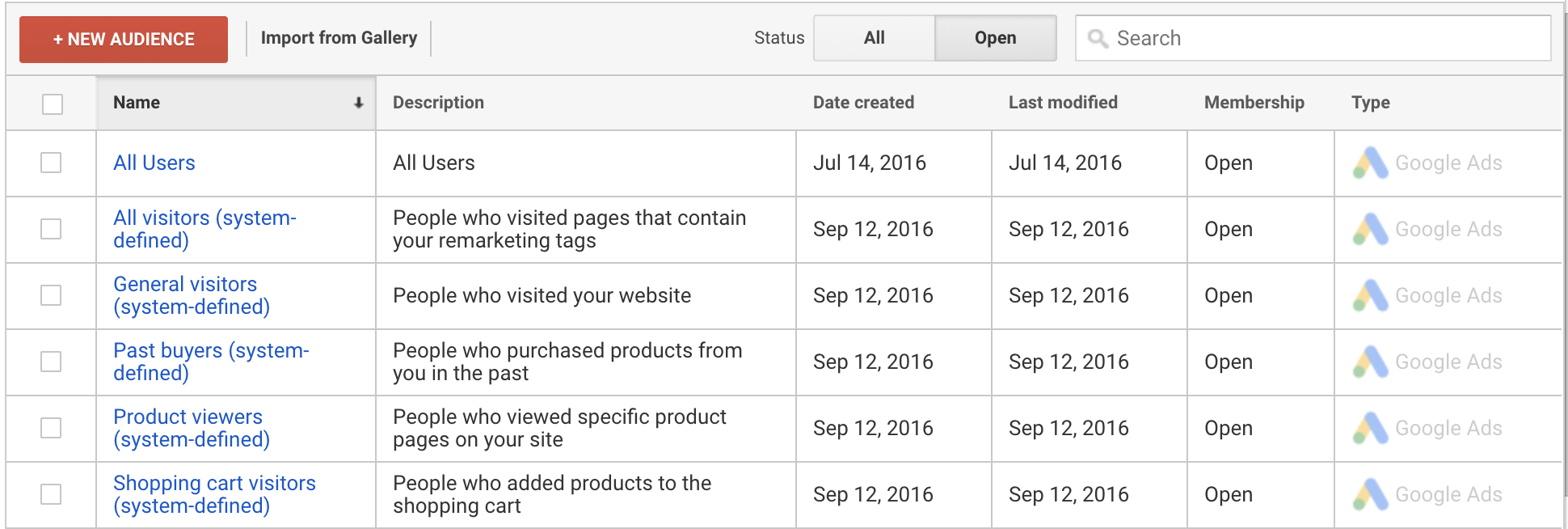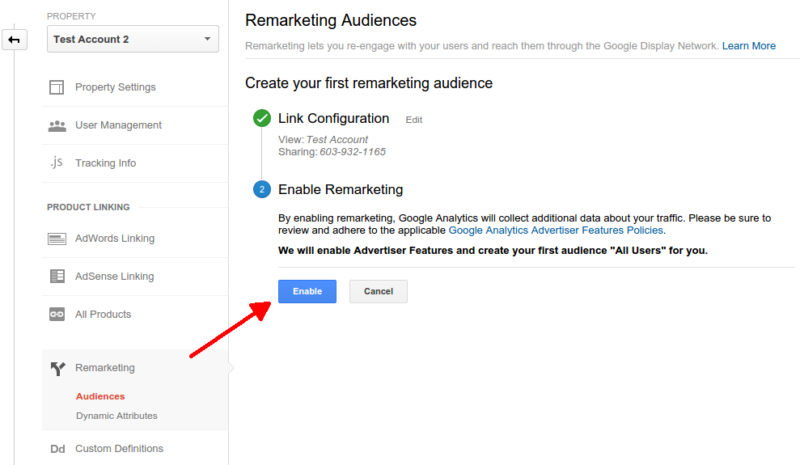Effective Strategies for Remarketing In Google Analytics
Effective Strategies for Remarketing In Google Analytics
Blog Article
Remarketing in Google Analytics: Changing Visitor Information Into Sales
The capability to exactly target audiences based on their actions and choices opens doors to a world of opportunities, propelling companies towards lasting development and profitability. Through a precise analysis of site visitor activities and a customized remarketing approach, companies can browse the digital landscape with precision and finesse, deciphering the true possibility of their online visibility.

Benefits of Remarketing in Google Analytics
Remarketing in Google Analytics offers companies the chance to reconnect with web site site visitors that have actually revealed passion in their solutions or items, consequently raising brand exposure and conversions. By leveraging this effective device, services can stay top-of-mind with possible consumers who have actually currently involved with their website. Among the essential advantages of remarketing is the capability to target certain audiences based on their behavior on the website, enabling personalized messaging and customized marketing campaigns.
Additionally, remarketing in Google Analytics can assist companies increase their conversion prices by re-engaging with site visitors that might not have made a purchase or finished a wanted action on the site during their first go to. This targeted approach can lead to greater conversion rates and eventually drive even more sales. In addition, remarketing can additionally aid organizations develop brand name commitment and depend on by preserving consistent communication with possible clients throughout their buying trip.
Establishing Remarketing Campaigns
When initiating remarketing projects in Google Analytics, companies require to thoroughly plan and carry out tactical targeting methods to efficiently reach their desired target market. The very first step in establishing remarketing campaigns is to specify clear purposes. Whether the goal is to raise website conversions, advertise certain products, or elevate brand understanding, having a distinct purpose will assist the entire campaign strategy.
Following, organizations need to produce audience checklists based upon certain standards such as web site site visitors, users that abandoned their buying carts, or those who connected with specific material. These checklists enable targeted messaging tailored to every section of the target market, increasing the possibilities of conversion.

Finally, organizations ought to set up conversion tracking to determine the success of their remarketing projects accurately. By analyzing the performance data, businesses can enhance their advocate much better outcomes and greater ROI.
Leveraging Target Market Segmentation for Remarketing
Utilizing target market segmentation is a critical strategy for enhancing the effectiveness of remarketing projects in Google Analytics (What Is “Remarketing” In Google Analytics?). By dividing your website site visitors into unique groups based upon their habits, demographics, or rate of interests, you can customize your remarketing initiatives to target these certain sectors with pertinent advertisements. Target market segmentation allows you to develop more tailored and targeted projects, boosting the possibilities of re-engaging site visitors and driving conversions
Segmenting your target market allows you to supply personalized messaging that resonates with each group's needs and choices. As an example, you can produce different remarketing checklists for individuals that deserted their buying carts, saw certain product web pages, or downloaded a certain source. By recognizing the different motivations and interests of these segments, you can craft engaging ad creatives that are most likely to catch their focus and motivate them to revisit your website.
Moreover, audience division additionally helps you maximize your ad invest by concentrating on high-value sectors that are most likely to transform - What Is “Remarketing” In Google Analytics?. By evaluating the efficiency of each section, you can allocate your budget plan much more properly and optimize the return on your remarketing investment
Analyzing Remarketing Efficiency Metrics
To efficiently evaluate the success of remarketing campaigns in Google Analytics, evaluating vital efficiency metrics is essential. Metrics such as click-through price (CTR), conversion price, cost per purchase (CERTIFIED PUBLIC ACCOUNTANT), and return on ad spend (ROAS) supply valuable insights right into the efficiency of your remarketing initiatives. CTR indicates the portion of customers who clicked your ad after seeing it, mirroring the advertisement's significance and charm to your audience. Conversion rate determines the percent of users who completed a preferred activity, such as purchasing, after clicking on your ad. Certified public accountant aids figure out the expense of obtaining a customer through your remarketing project, while ROAS analyzes the earnings produced for each dollar invested in advertising and marketing. By analyzing these metrics, you can identify locations for enhancement, enhance your projects, and allot spending plan more properly to optimize the ROI of your remarketing approaches in Google Analytics.

Best Practices for Remarketing Success
Building on the structure of examining remarketing performance metrics, implementing ideal practices is vital to accomplishing success in your remarketing undertakings. Furthermore, guarantee that your remarketing advertisements are visually attractive and contain compelling telephone calls to action.
Pounding users with the exact same ad continuously Full Report can lead to nuisance and decreased efficiency. Monitor your campaigns on a regular basis, analyze the data, and make data-driven choices to continually improve your remarketing initiatives for maximum effect.
Final Thought
Finally, remarketing in Google Analytics supplies businesses useful link the possibility to utilize visitor information to increase sales and drive conversions. By using audience division, evaluating performance metrics, and executing best methods, companies can customize their remarketing initiatives to target high-value sections efficiently. With compelling advertisement creatives and conversion tracking, companies can construct brand name loyalty and count on, eventually maximizing the influence of their marketing techniques.
With a meticulous evaluation of visitor activities and a customized remarketing strategy, services can navigate the digital landscape with accuracy and finesse, untangling the true potential of their on the internet presence.
One of the key benefits of remarketing is the capacity to target details target markets based on their behavior on the website, permitting for customized messaging and customized advertising and marketing projects.
Additionally, remarketing can also assist organizations build brand loyalty and depend on by maintaining constant communication with potential clients throughout their buying journey.
Metrics such as click-through rate (CTR), conversion rate, cost per procurement (CPA), and return on advertisement spend (ROAS) offer useful understandings right into the performance of your remarketing efforts. By evaluating these metrics, you link can determine locations for renovation, enhance your projects, and allot budget much more efficiently to make the most of the ROI of your remarketing strategies in Google Analytics.
Report this page